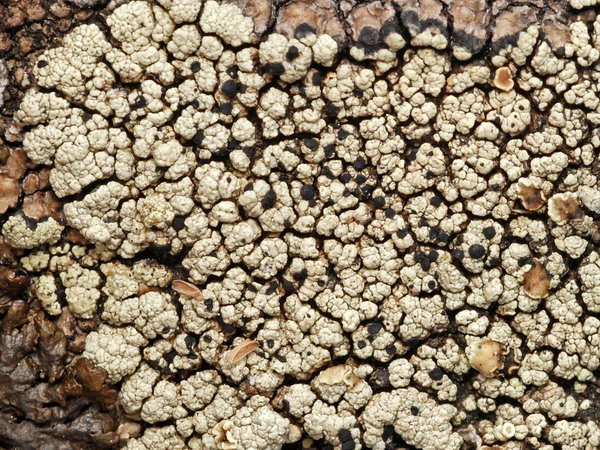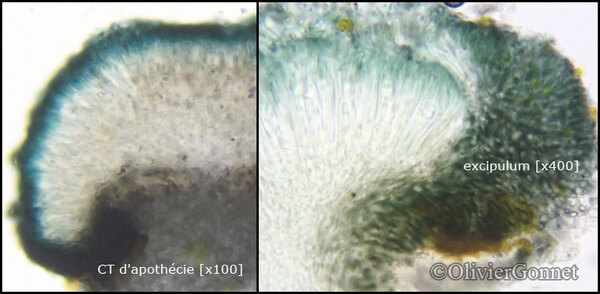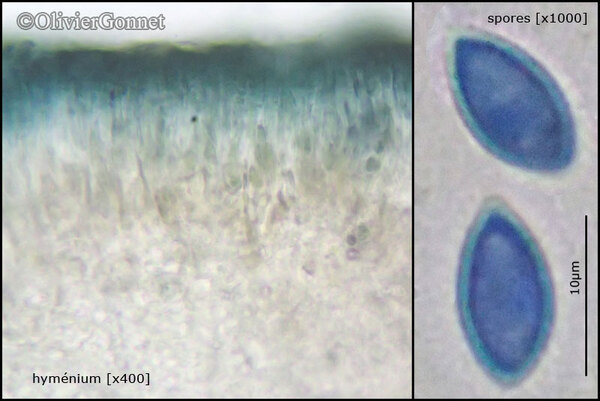Carbonea supersparsa (Nyl.) Hertel
Mitt. bot. Staatss. München, 19: 375, 1983. Basionym: Lecidea supersparsa Nyl. - Flora, 48, 1865.
Synonyms: Nesolechia supersparsa (Nyl.) Rehm; Nesolechia vitellinaria var. supersparsa (Nyl.) Keissl.
Distribution: N - Frl (Tretiach & Hafellner 2000, Brackel 2016, Hafellner 2021), TAA (Hafellner 2006, 2021, Brackel 2016), Piem (Brackel 2016), Emil (Brackel 2025), Lig (Brackel 2025). C - Tosc (Brackel 2015, 2016), Laz (Brackel 2016), Sar (Brackel 2016). S - Cal (Brackel & Puntillo 2016, Brackel 2016), Si (Brackel 2008c, 2016).
Description: Thallus indistinct, not lichenized, immersed in the thallus and apothecia of Lecanora polytropa s.lat. and Rhizoplaca-species. Apothecia lecideine, jet black, sessile, 0.2-0.5(-0.7) mm across, with a concave to flat disc, and a raised, finally sometimes excluded proper margin. Proper exciple green-black or brown-black, N+ purple-red; epithecium dark blue-green, K+ bright emerald green, N+ purple-red; hymenium colourless in lower part, greenish in upper part, 40-50 µm high; paraphyses simple, coherent, 1-2 μm thick at mid-level, the apical cell to 3.5 µm wide; hypothecium colourless to pale brown, c. 30 µm high, K-. Asci 8-spored, clavate, the K/I+ blue tholus penetrated by a faintly amyloid apical cushion with parallel or diverging flanks, the outer wall very thin, K/I-, surrounded by a K/I+ blue outer layer, Lecanora-type. Ascospores 1-celled, hyaline, ellipsoid to fusiform with pointed ends, (7-)8-13(-14) x 4-7 µm. Photobiont absent. Spot tests: all negative. Chemistry: without lichen substances.Note: a mainly boreal-montane to arctic-alpine, circumpolar lichenicolous fungus, certainly widespread throughout the Alps. Allbeit rarely, the species has been also reported from the Humid Mediterranean ecoregion.
Growth form: Lichenicolous fungus
Substrata: rocks
Reproductive strategy: mainly sexual
paras Lecanora polytropa s.lat. and Rhizoplaca spp.
Commonnes-rarity: (info)
Alpine belt: rather rare
Subalpine belt: rather common
Oromediterranean belt: extremely rare
Montane belt: rare
Submediterranean belt: extremely rare
Padanian area: absent
Humid submediterranean belt: absent
Humid mediterranean belt: extremely rare
Dry mediterranean belt: absent
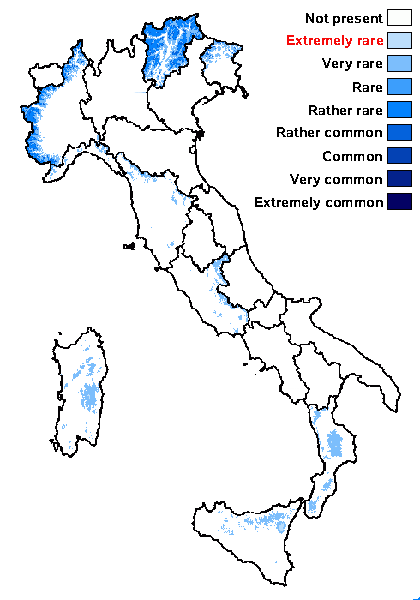
Predictive model
Herbarium samples

Wolfgang von Brackel - Source: Brackel von W. 2025. Lichenicolous fungi from the northern Apennines and foreland (Italy). Borziana, 6: 5-53.
Italy
Carbonea supersparsa (black apothecia on the thallus) and Cercidospora stenotropae (small
black perithecia on the apothecia) on Lecanora polytropa, Passo della Forcella, Liguria.
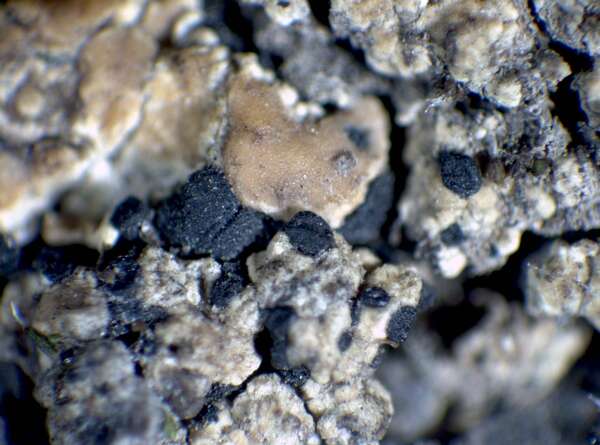

P.L. Nimis; Owner: Department of Life Sciences, University of Trieste
Herbarium: TSB (11781)
2001/11/22
on the host, Lecanora polytropa
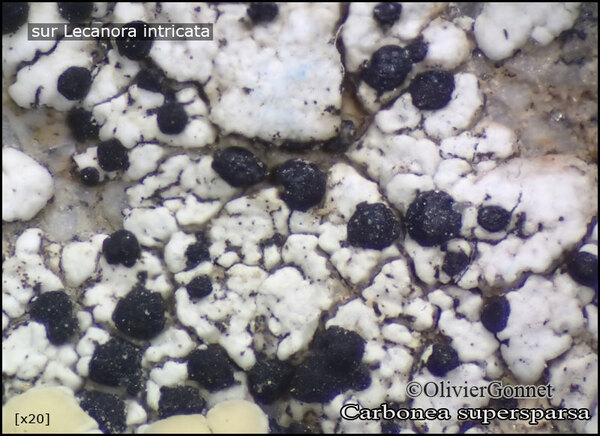
Courtesy: Olivier et Danièle Gonnet - Source: https://www.afl-lichenologie.fr/Photos_AFL/Photos_AFL_C/Textes_C6/Carbonea_supersparsa.htm
France, Jausiers - Alpes-de-Haute-Provence
22/8/2014
Growth form: Lichenicolous fungus
Substrata: rocks
Reproductive strategy: mainly sexual
paras Lecanora polytropa s.lat. and Rhizoplaca spp.
Commonnes-rarity: (info)
Alpine belt: rather rare
Subalpine belt: rather common
Oromediterranean belt: extremely rare
Montane belt: rare
Submediterranean belt: extremely rare
Padanian area: absent
Humid submediterranean belt: absent
Humid mediterranean belt: extremely rare
Dry mediterranean belt: absent

Predictive model
| Herbarium samples |

Wolfgang von Brackel - Source: Brackel von W. 2025. Lichenicolous fungi from the northern Apennines and foreland (Italy). Borziana, 6: 5-53.
Italy
Carbonea supersparsa (black apothecia on the thallus) and Cercidospora stenotropae (small
black perithecia on the apothecia) on Lecanora polytropa, Passo della Forcella, Liguria.


P.L. Nimis; Owner: Department of Life Sciences, University of Trieste
Herbarium: TSB (11781)
2001/11/22
on the host, Lecanora polytropa

 INDEX FUNGORUM
INDEX FUNGORUM
 GBIF
GBIF
 DOLICHENS
DOLICHENS
